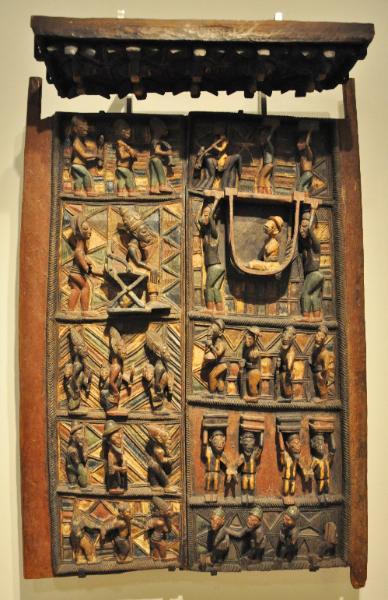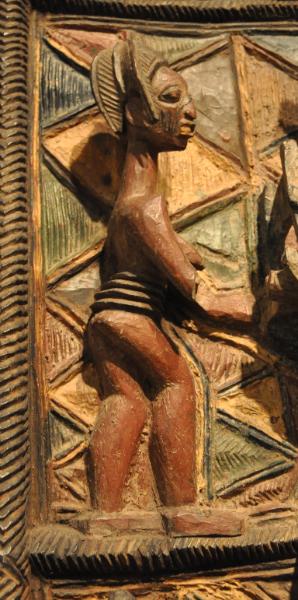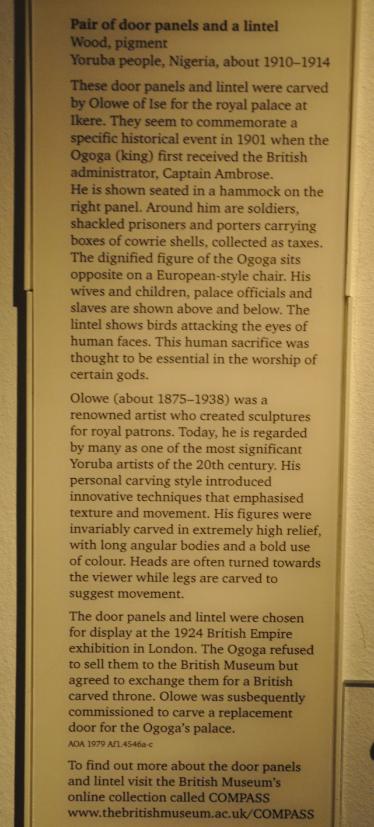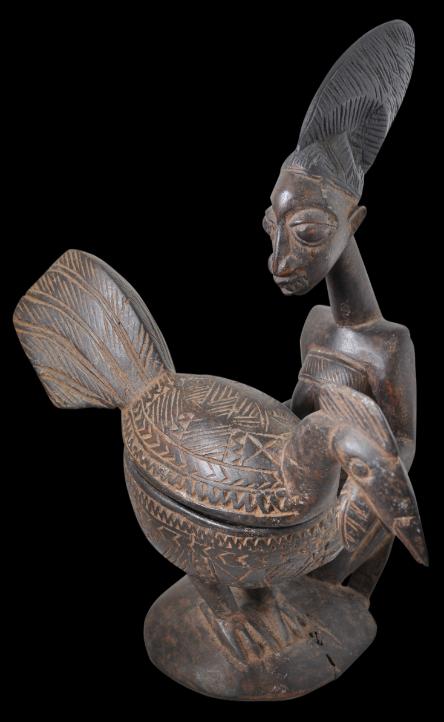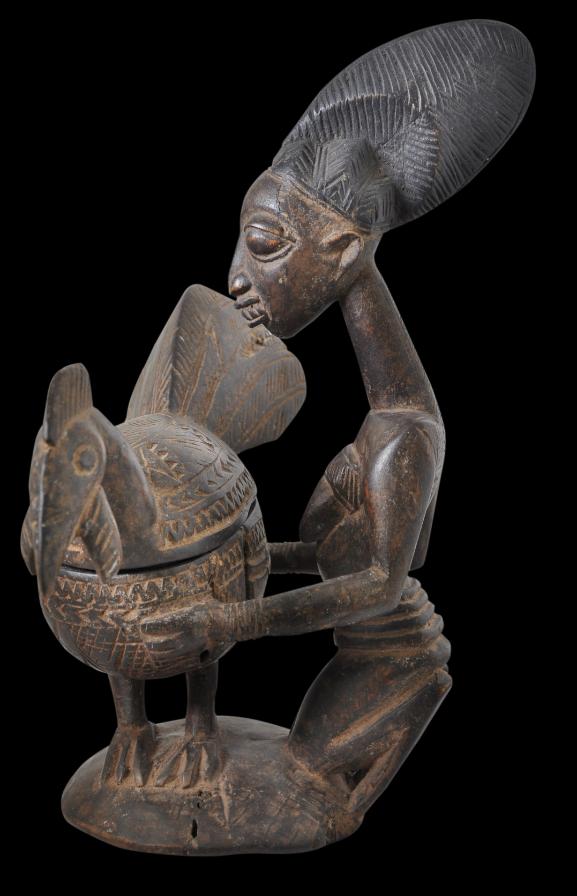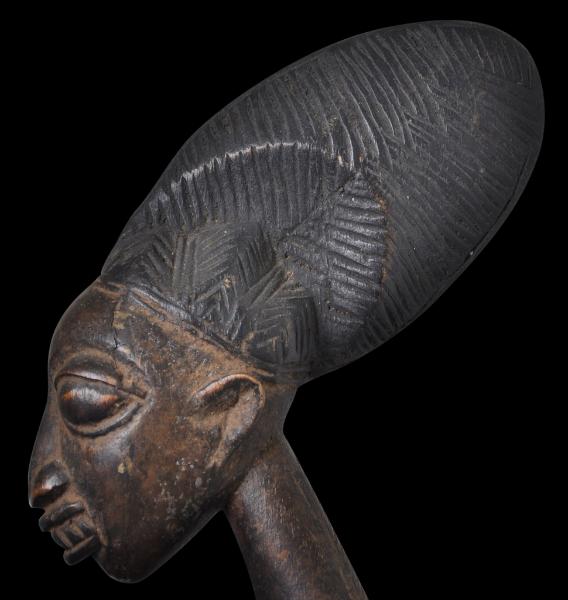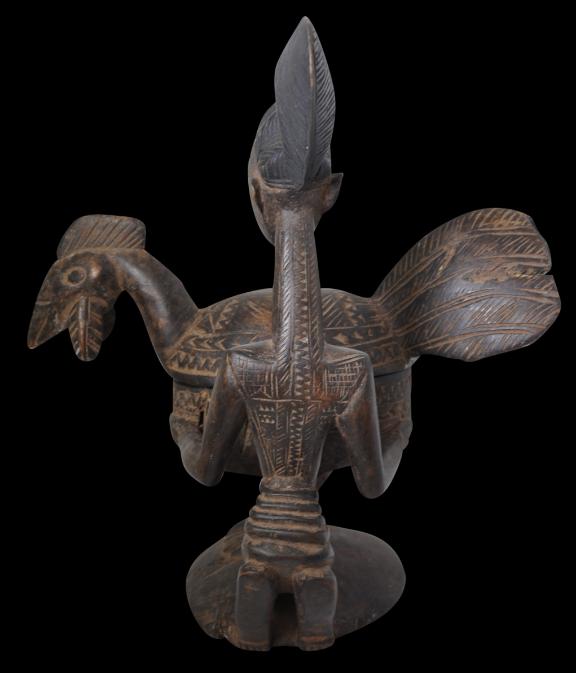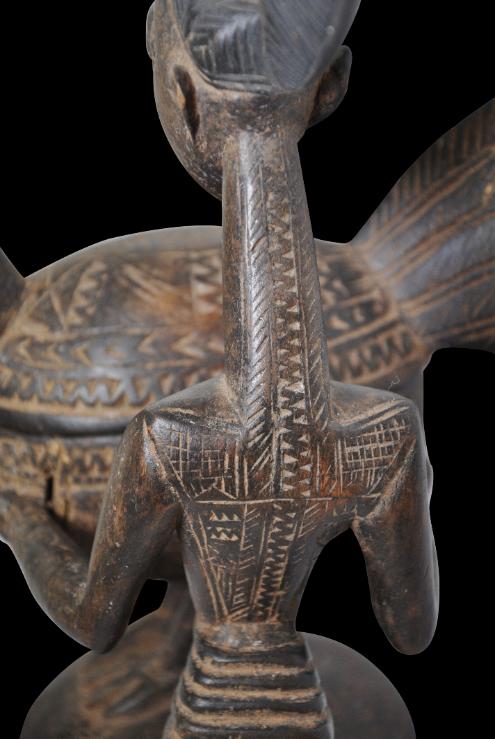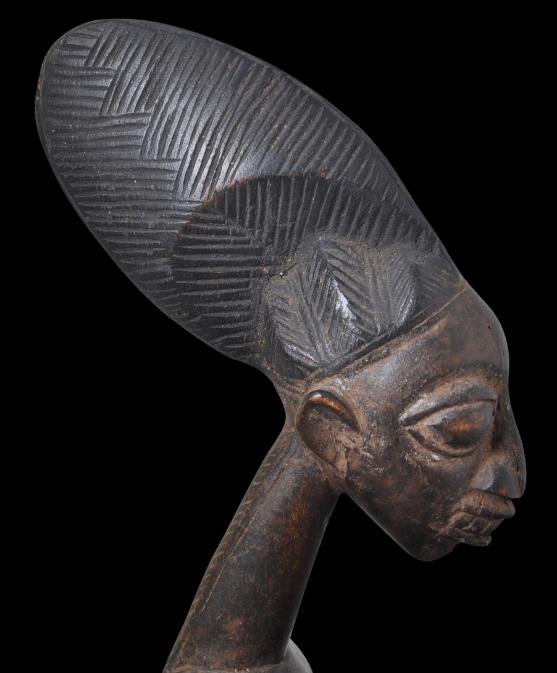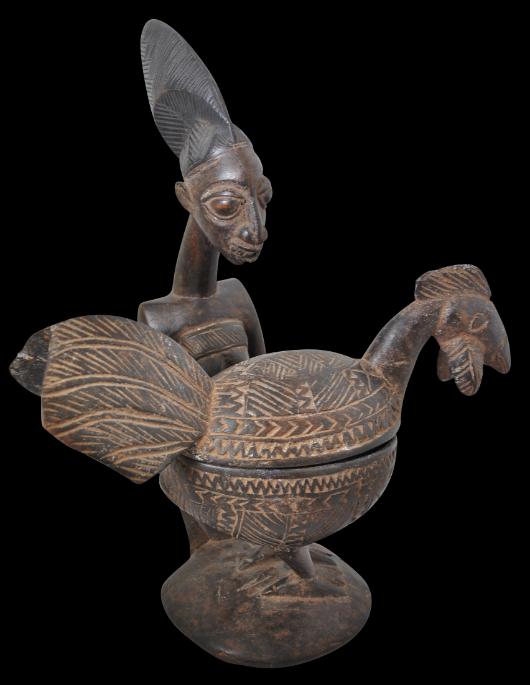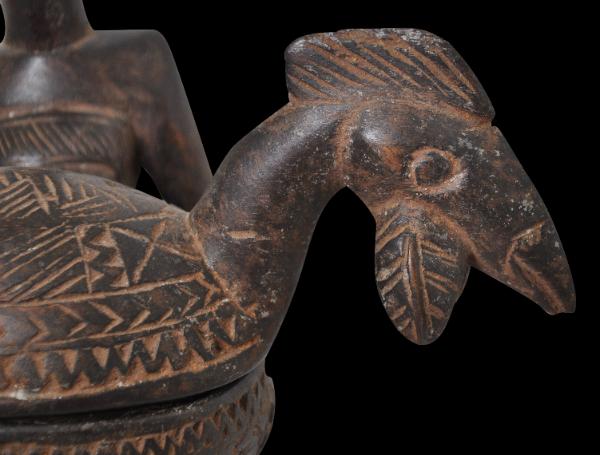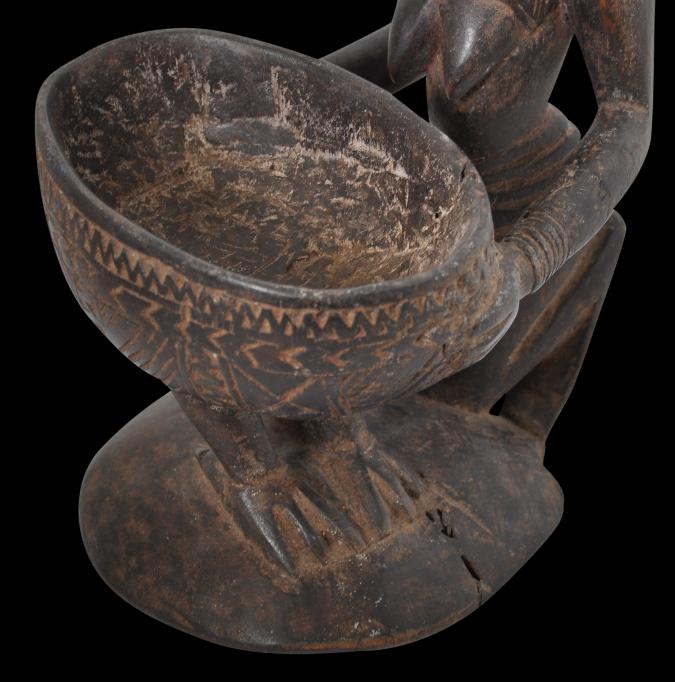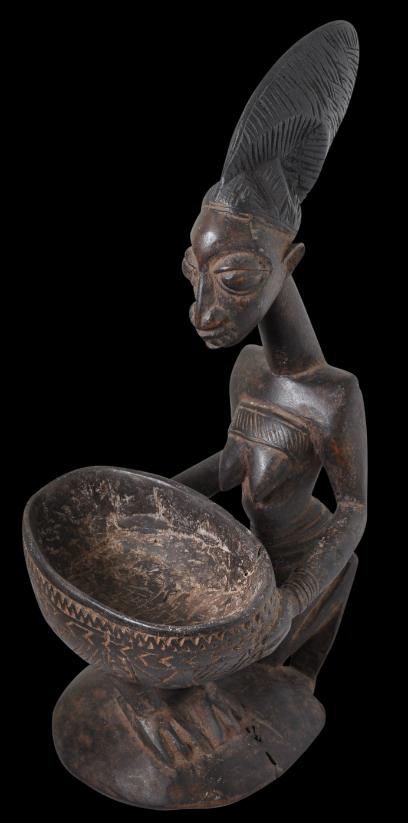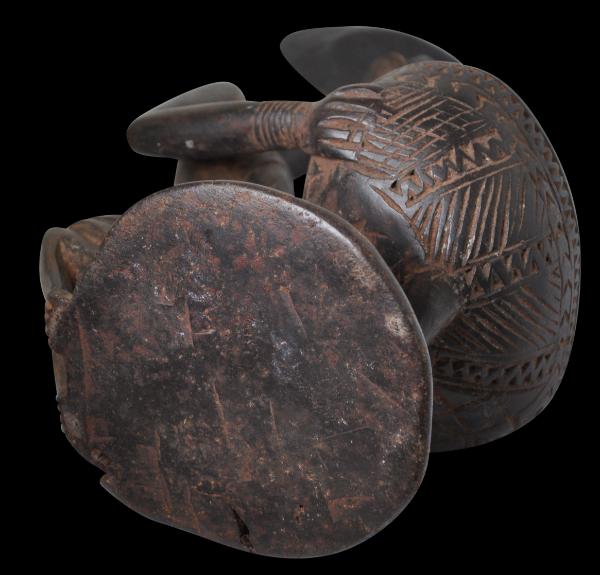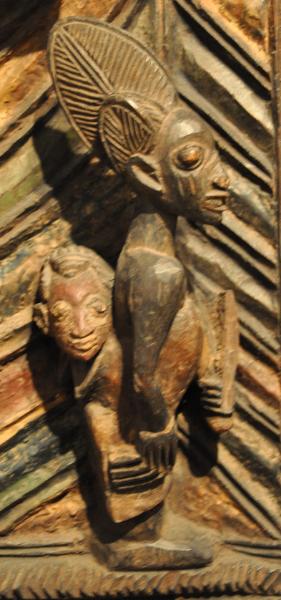
Olowe of Ise Sculpture, Yoruba
Superb Figural Offering Bowl (Olumeye) in the style of Olowe of Ise
Yoruba People, Nigeria
circa 1920
height: 34.3cm, width: 30cm, depth: 16.5cm
This beautiful carved wooden figure of a kneeling woman holding a bowl in the form of a cock or chicken is very much in the style of the great Yoruba carver Olowe of Ise.
Such a vessel is referred to by the southern Nigerian Ekiti people as an
Olumeye (‘One-who-knows-honour’). It depicts a woman who is said to be a messenger from the spirits. Such sculptures were used to hold kola nuts which were offered to visitors, as shrine containers for offerings to an orisa, and to hold palm nuts used in Ifa divination (Rowland, Drewal & Pemberton, 1991, p. 39).
The image, on a rounded base and including the lid, most probably is carved from a single piece of light wood. Traditionally, kneeling was a gesture of respect and devotion among the Yoruba.
The figure has an elongated, oval face and bulging almond eyes with prominent, heavy eyelids. The nose is flared; the ears pointed; and the lips full and parted to reveal a row of prominent teeth.
The breasts are full. A carved band above the breast probably denotes scarrification. More carved scarrification bands run down the back of the neck and across the back. Such carving work to the back of the neck and back is in keeping with Olowe of Ise’s style.
The figure has traditional but unusually elongated bridal head-dressing: a raised single-crested coiffure with incised triangular motifs. This coiffure is called
irun agogo, which suggests the figure is married.
The torso is erect. Multiple bracelets are carved on each wrist. Multiple, heavy bands are about the waist. Otherwise, the figure is naked.
Such images of the female represent a manifestation of Yoruba ideals of beauty and the gods’ power to bequeath fertility. The carver has carefully executed the figure’s composition to conform to Yoruba traditions as well as to achieve a great sense of equilibrium.
The figure’s strong arms stretch out horizontally and hold firmly to the bowl. The bowl itself is in the form of the bottom-half of a chicken (with zoomorphic feet and a tail). The top half of the chicken forms the bowl’s cover. The chicken is carved all over with geometric designs in place of feathers.
Overall, this female depicted conveys a sense of tranquillity: she is youthful, and yet strong and maternal.
The bowl has an excellent brown patina with contours softened from age and handling. There are no significant or obvious chips, splits or restorations. It is one of the finest examples of Yoruba carving that we have encountered.
References
Cole, H. M., Icons: Ideals and Power in the Art of Africa, Smithsonian, 1991.
Fagg, W. & Pemberton, J. III.,
Yoruba: Sculpture of West Africa, Collins, 1982.
Lawal, B.,
The Gelede Spectacle: Art, Gender, and Social Harmony in an African Culture, University of Washington Press, 1996.
Nooter Roberts, M. & A.F. Roberts,
A Sense of Wonder: African Art from the Faletti Family Collection, Phoenix Art Museum, 1998.
Polo, F.,
Encyclopedia of the Ibeji, Ibeji Art, 2008.
Price, C.,
Made in Africa, Cassell & Collier Macmillan Publishers, 1975.
Robbins, W. M. & N. I. Nooter,
African Art in American Collections, Smithsonian Institution Press, 1989.
Rowland, A., Drewal, H. J. & Pemberton, J. III.,
Yoruba: Art and Aesthetics, Museum Rietberg, Zurich, 1991.
Walker, R. A.,
Olowe of Ise: A Yoruba Sculptor to Kings, National Museum of African Art, 1998.
Waterfield, H. & J. C. H. King,
Provenance: Twelve Collectors of Ethnographic Art in England 1760-1990, PHP, 2009.Provenance:
UK art market
Inventory no.: 3385
SOLD
here

